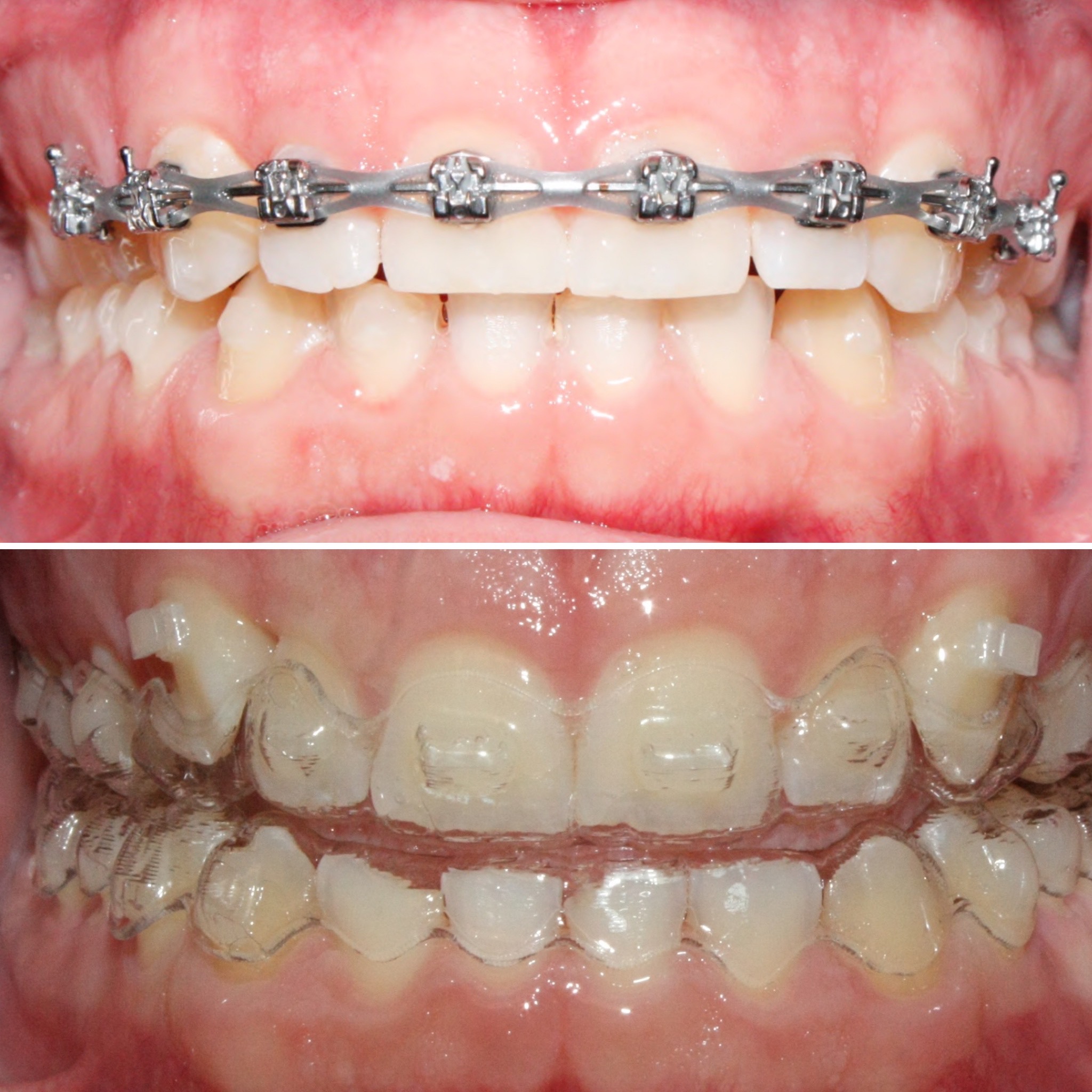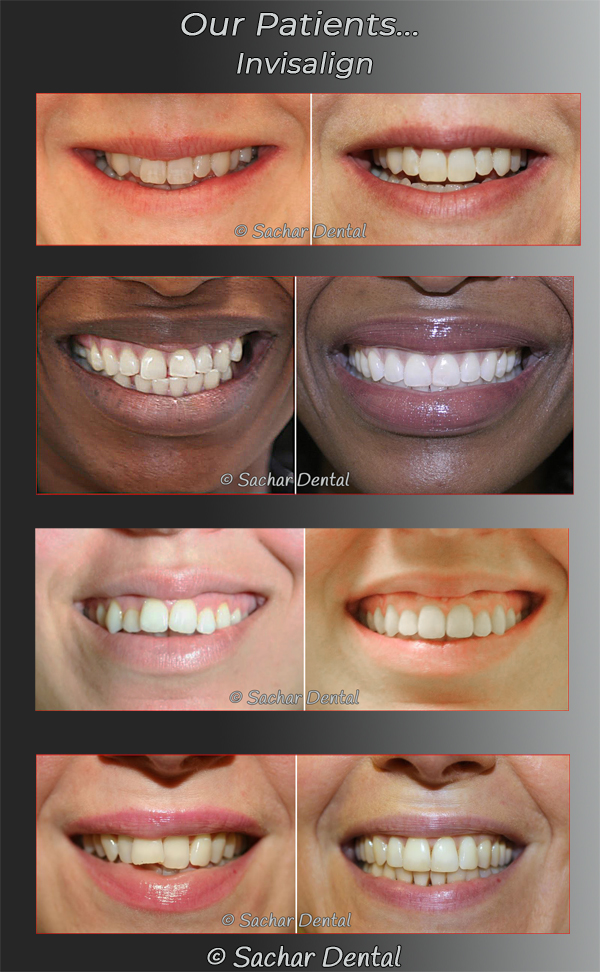How Invisalign Functions: Your Guide to Clear Aligners and Their Effectiveness
Invisalign vs. Traditional Braces: Which Choice Is Right for You?
When thinking about orthodontic treatment, the selection in between Invisalign and standard braces presents numerous vital aspects that merit careful assessment. Invisalign offers a very discreet option with removable aligners, while traditional braces give a much more visible yet reliable option for serious misalignment.
Summary of Treatment Choices

In contrast, typical braces include steel brackets and wires that are adhered to the teeth. This method applies continual stress gradually to attain alignment. While efficient for intricate orthodontic issues, conventional dental braces call for regular brows through for modifications and can posture challenges in maintaining dental health due to the difficulty of cleansing around cables and braces.
Both alternatives have their benefits, and the option typically rests on certain dental problems, way of life preferences, and patient compliance. Eventually, getting in touch with an orthodontic professional is essential for establishing the most suitable treatment plan tailored to individual demands. Understanding the nuances of each alternative can considerably influence the overall success of orthodontic therapy.
Aesthetic Factors To Consider
A significant element influencing the choice in between Invisalign and typical dental braces is the aesthetic charm each treatment provides. Invisalign aligners are crafted from clear plastic, making them practically unnoticeable when worn. This very discreet look is specifically attracting young adults and grownups who may feel awkward concerning their orthodontic treatment. The ability to keep an all-natural smile throughout the positioning process can considerably improve the person's confidence in professional and social settings.
In contrast, standard dental braces consist of steel brackets and cords, which can be a lot more visible. While developments in orthodontic technology have actually led to the advancement of smaller sized brackets and tinted elastics, standard braces still preserve an even more conspicuous account. For some individuals, the exposure of dental braces may hinder them from seeking essential treatment.
Inevitably, the option in between Invisalign and standard dental braces may depend upon personal choices concerning looks. Patients who prioritize discretion usually lean toward Invisalign, while those that are much less worried concerning presence might go with traditional braces. Understanding the aesthetic ramifications of each alternative is critical for making an informed choice that aligns with one's way of life and choices.
Comfort and Convenience

In regards to benefit, Invisalign aligners are removable, making it possible for clients to appreciate their preferred foods without limitation and preserve ideal oral health. Cleaning and flossing are simplified, as the aligners can be obtained throughout these regimens, whereas typical dental braces need mindful steering around wires and braces.
In contrast, conventional dental braces require regular modifications, making them less convenient for those with hectic timetables. In general, the view it convenience and convenience of Invisalign make it an attractive selection for numerous Click Here people seeking orthodontic therapy.
Treatment Duration and Performance
While both Invisalign and conventional dental braces work in fixing oral misalignments, the duration of treatment can differ considerably between the 2 options. Generally, Invisalign therapy can take anywhere from 12 to 18 months, relying on the complexity of the case. The clear aligners function by slowly shifting teeth into their wanted placements, and normal follow-ups with an orthodontist aid guarantee you can try this out progression remains on course.
In comparison, typical braces frequently need a longer dedication, normally ranging from 18 months to 3 years. This is due to their fixed nature and using brackets and wires, which can be much more efficient for severe misalignments and complex cases (Invisalign). The therapy performance of typical dental braces is well-documented, as they enable for exact changes and better control over tooth activity
Inevitably, the option between Invisalign and conventional braces might rest on both the awaited therapy period and the particular dental concerns handy. Consulting with an orthodontist is important, as they can offer tailored recommendations based upon specific requirements, making sure the selected method aligns with wanted timeframes and results.
Cost Contrast and Insurance Policy Choices
Cost plays a substantial duty in the decision-making process for individuals taking into consideration orthodontic treatment, whether selecting Invisalign or typical dental braces. On average, the cost of Invisalign arrays from $3,000 to $8,000, while conventional braces commonly set you back between $2,000 and $6,000. Factors affecting these costs consist of the complexity of the situation, the duration of therapy, and geographical location.
Many dental insurance strategies give partial protection for orthodontic therapies, but the specifics can vary widely. Normally, conventional braces may be a lot more regularly covered by insurance plans contrasted to Invisalign, which some insurers categorize as a cosmetic procedure.
Furthermore, a number of orthodontic techniques supply flexible layaway plan, making both treatment options much more obtainable. People should ask about prospective funding alternatives and discount rates for upfront repayments. Evaluating the complete price, consisting of insurance benefits and layaway plan, is vital for making a notified decision that lines up with both aesthetic preferences and budget factors to consider.

Final Thought
In summary, the choice between Invisalign and traditional braces hinges on several aspects, consisting of aesthetic preferences, convenience, therapy period, and expense. Invisalign provides a discreet, detachable alternative that facilitates dental health and dietary flexibility, while traditional dental braces might be better for intricate oral problems and typically come at a reduced cost point. Inevitably, examination with an orthodontist is necessary to examine individual conditions and establish the most appropriate therapy choice for achieving ideal dental placement.
When thinking about orthodontic treatment, the selection between Invisalign and typical braces presents a number of essential factors that warrant cautious examination.Comparing Invisalign and standard braces exposes distinct therapy options for orthodontic improvement.While both Invisalign and conventional dental braces are efficient in dealing with dental imbalances, the duration of treatment can differ substantially in between the two alternatives.Cost plays a considerable duty in the decision-making process for people considering orthodontic treatment, whether deciding for Invisalign or traditional braces.In summary, the option in between Invisalign and traditional braces pivots on several variables, consisting of aesthetic choices, comfort, therapy duration, and price.